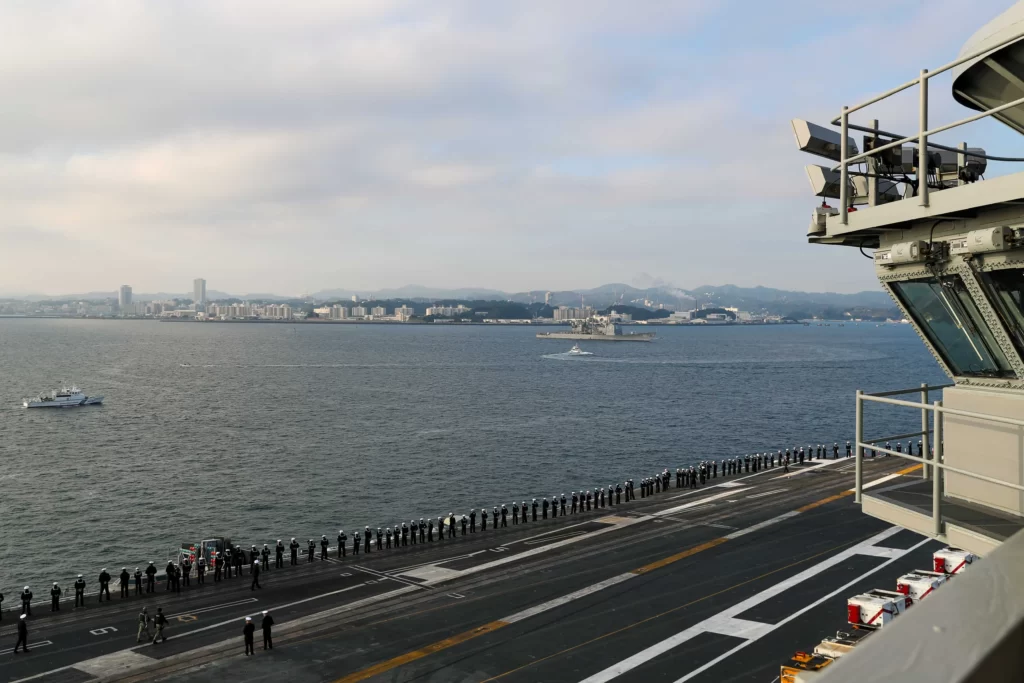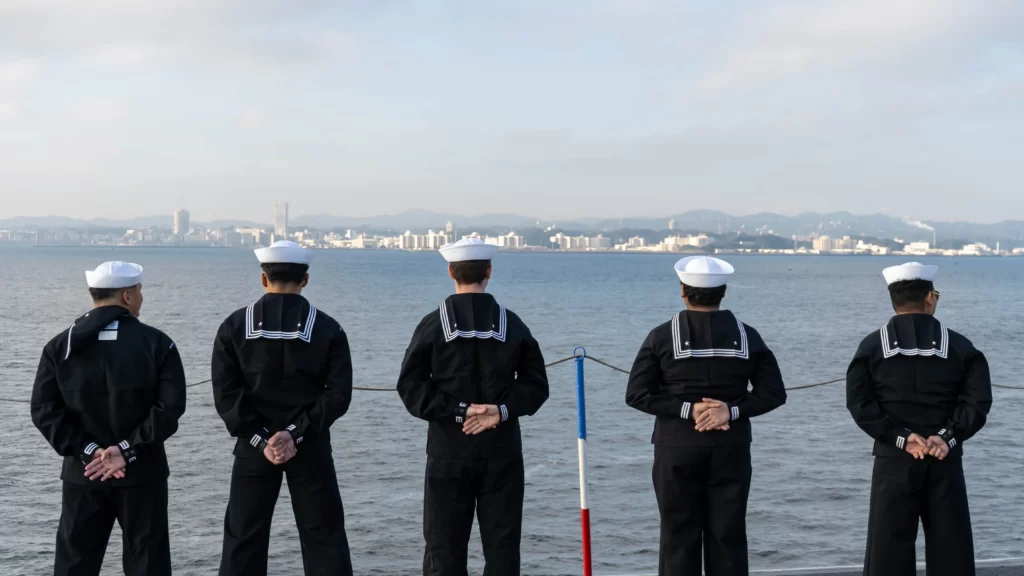With its arrival in Yokosuka, Japan, on November 22, the aircraft carrier USS George Washington (CVN 73) has officially assumed its role as the U.S. Navy’s forward-deployed aircraft carrier in the Pacific region, relieving the USS Ronald Reagan (CVN 76). The ship’s arrival at the Japanese port concludes a months-long journey that began in April with its departure from Naval Station Norfolk. During this time, the vessel participated in exercises with various South American naval forces in the U.S. Southern Command area of operations and, more recently, with the Republic of Korea Navy and the Japan Maritime Self-Defense Force prior to its arrival.

“A U.S. aircraft carrier represents the most advanced maritime capability we have, and it’s the most significant investment we can make in Japan’s security and the Western Pacific,” stated Vice Admiral Fred Kacher, commander of the U.S. 7th Fleet, during the ship’s arrival ceremony. “The George Washington returns with cutting-edge technology, reflecting our investment in deterrence and security in this region,” he emphasized.
The USS George Washington (CVN 73)’s return to Japan marks the second time this flagship will serve as a forward-deployed aircraft carrier. Its first deployment was a milestone for the U.S. Navy, being the first nuclear-powered carrier to operate under this arrangement. However, much has changed since its initial tenure from 2008 to 2015, with rising tensions between the People’s Republic of China and Taiwan and increased operations by Russian Armed Forces in the Indo-Pacific region.

Last week, Japan’s Self-Defense Forces reported the presence of an IL-20 signals intelligence aircraft over the southern Sea of Japan, adding to a series of long-range patrols conducted by Russian Navy and Aerospace Forces assets. Meanwhile, a new Russian attack submarine is expected to join the Pacific Fleet in the near future.
Amid these challenges, the USS George Washington (CVN 73) underwent extensive preparations before departing Naval Station Norfolk last April, a process not without its difficulties and delays. The ship’s Refueling and Complex Overhaul (RCOH), which included refueling its nuclear reactor, was only completed in May 2023, nearly two years behind the original schedule.


After overcoming these setbacks, the carrier’s crew began readying for their journey to the Far East. During its deployment in April, the ship engaged in significant PASSEX exercises with South American navies along both the Atlantic and Pacific coasts before reaching Naval Base San Diego.
After completing final preparations on the U.S. West Coast, the aircraft carrier commenced its Pacific crossing. Before arriving in Yokosuka in mid-November, the ship and its Carrier Strike Group participated in the trilateral Freedom Edge exercise with South Korean and Japanese naval forces.

Finally, marking the conclusion of this journey and the start of its mission, Captain Tim Waits, commanding officer of the George Washington, remarked: “Arriving here in Yokosuka has been a milestone for this crew for many months, and for some, the journey began in April when we departed Virginia.” He added: “I couldn’t be prouder of this team. Not only did we arrive safely and on time, but from day one of the deployment, we met every objective, exceeded all expectations, and were ready to take on tasks the moment we entered the 7th Fleet area of operations.”
Photographs: U.S. Navy.
You may also like: Lockheed Martin successfully conducts the first salvo shot of the U.S. Army’s new PrSM ballistic missile









